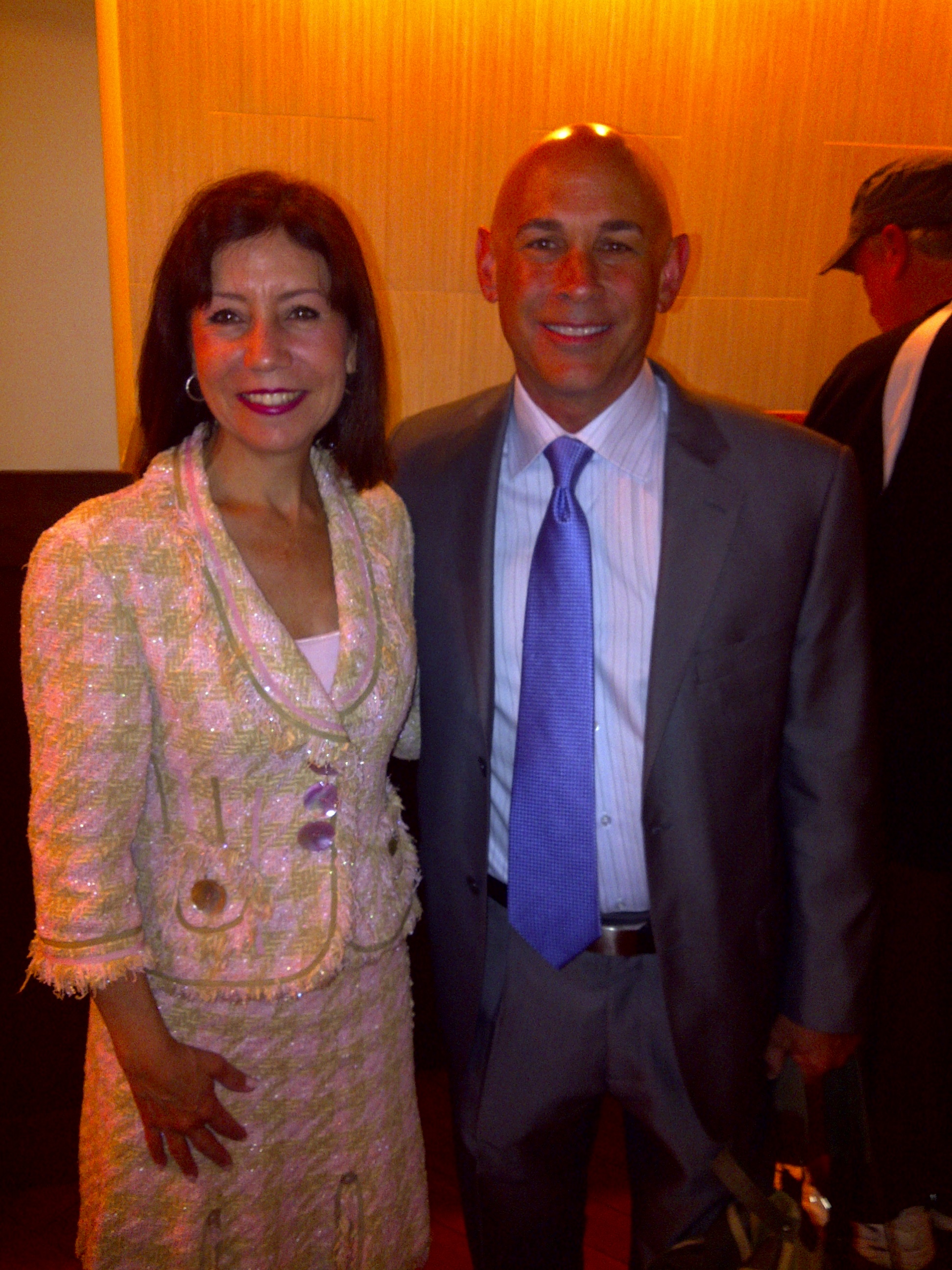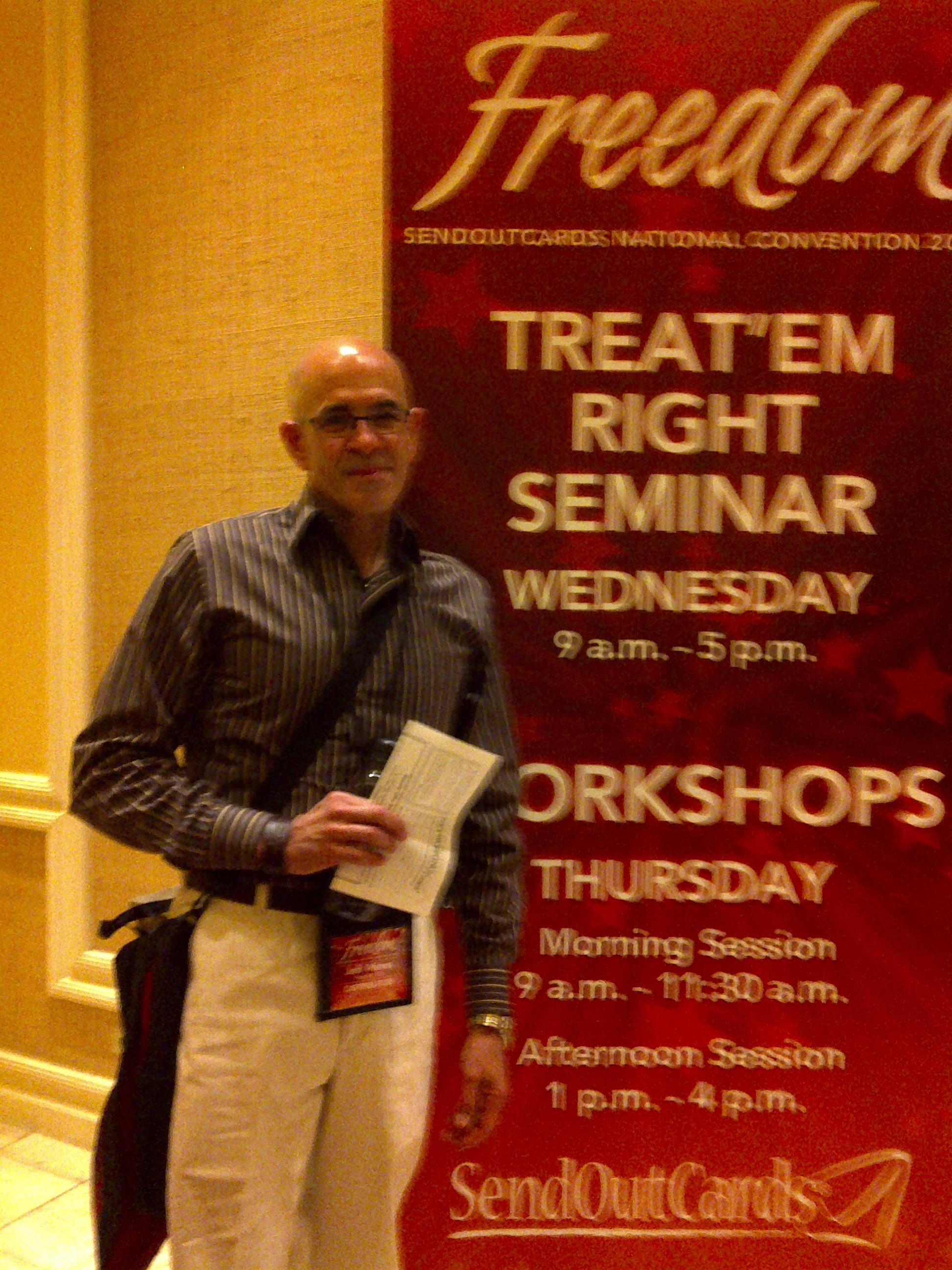Eager to keep your students engaged? Rest assured that with the utilization of the latest learning tools, you are going to be able to achieve this target. Guest Blogger, Kamy Anderson is an ed-tech enthusiast with a passion for writing on emerging technologies in the areas of corporate training and education.
10 Mistakes to Avoid When You're Ready for Your Close-Up
 Can you send me a head shot? Do you dread that question? If you're invited to speak you'll need to send a professional photograph. It's a must-have for every public speaker. Even non-speakers need head shots for social media and your photograph is your visual presentation. Do you dislike how you look on camera? Are you convinced you're not photogenic? Not so, says Lisa Crosby, professional photographer for actors, speakers, and professionals. But there are some things you need to know if you want a good professional picture that sells you.
As a photographer for 19 years, Lisa has a unique perspective through the lens that can make anyone look good. She began her career as a classical ballerina and model. Being in front of the camera gave her insights into being behind the camera. Modeling and dance gave her the ability to study the body.
Can you send me a head shot? Do you dread that question? If you're invited to speak you'll need to send a professional photograph. It's a must-have for every public speaker. Even non-speakers need head shots for social media and your photograph is your visual presentation. Do you dislike how you look on camera? Are you convinced you're not photogenic? Not so, says Lisa Crosby, professional photographer for actors, speakers, and professionals. But there are some things you need to know if you want a good professional picture that sells you.
As a photographer for 19 years, Lisa has a unique perspective through the lens that can make anyone look good. She began her career as a classical ballerina and model. Being in front of the camera gave her insights into being behind the camera. Modeling and dance gave her the ability to study the body.
"I get a feeling from the person," she reveals. "I scan their body. I know intuitively what it's going to do, how they'll work with me. I scan, get a feeling, and shoot. I know if a shoulder or neck is out of place. I read the person and know when I can push them and when to leave them alone. It’s a visual kind of feeling. I get the person relaxed and then we can get the body working."
Here are 10 mistakes to avoid when taking a head shot.
Lack of Trust
One of the biggest mistakes people make when posing for head shots is not listening to the photographer. "People think they know how they'll look best," she explains. "They don't!" The most difficult thing for people is to let go and trust, according to Crosby. A reason a person may not photograph well is because they fight with the photographer.
Double Chin
People try to avoid a double chin by putting their head up. This is the worst thing they can do. She has remedies for any kind of issue based on the techniques she learned from modelling. One trick for getting rid of a double chin is through leaning in. "Lean in with your forehead," she advises.
Blinking
Blinking can be a real problem. It's usually because of anticipation of a flash. Using In- studio light, Crosby has the person close their eyes, get a thought, and then open their eyes. "I’ll know when and why they’re blinking," she states. "Close your eyes, get your thought, open your eyes. When their thought is there, that’s when I shoot."
Unflattering Angle
When ts comes to angles, everybody is different. Each person has a good side and a bad side. If one eye is smaller you want the smaller eye to the camera. "I look at bone structure, size of eyes, etc," says Crosby. "There are ways to slim a fuller face with lighting or Photoshop. Lifting the head makes your eyes look beady. Eyes are what sell you. In reality, you need to drop the forehead, not the chin. That will give you better eye contact and minimize double chin."
Bad Lighting
A professional photograph will be well lit. The photographer should aim for "Nice, bright pretty light." If shooting your own video, don’t use a side light. Get light straight on the face and use two white fill cards (poster paper) on the side. Use a fill on the floor under the chin. Pop in some lights on the side so it looks pretty. Men can have darker fills because they desire more ruggedness.
Looking Heavy
Aside from Photoshop, you can look thinner on camera by angling your body. Don’t face the camera directly. Turn your body at a ¾ angle. Hips should be back.
Wrong Clothing
The most important tip is to wear clothes that fit.
If you spend time getting the clothes to fit right then it’s about the clothes, not the person. Make sure the clothes are not wearing you. If you don’t like it in the mirror don’t wear it in the photo. Crosby recommends bringing three different outfits to a photo shoot.
If you do your own hair and make-up you can’t have a shiny face, brown lipstick, too dark eyeliner, or sparkles on your face. Aim for clean, neat, and pretty. No Kim Kardashian eyes unless you’re going for that look. Your every day make-up routine doesn’t always translate on camera. Jet black eyeliner and dark red lipstick won’t photograph well. Crosby recommends using a professional hair and make-up artist.
Drab Colors
Avoid black unless it's a corporate photo. Use a color that flatters your eye color. White is tricky on camera. To appear more friendly, avoid dark colors. Nine times out of ten, a casting director will choose a colorful photo. What colors do advertisers go for? Blues, greens, and turquoise are popular. If a meeting planner is going through a mountain of speaker photos, what color will catch her eye?
Camera Shy
If you're tense in front of the camera, Crosby has tips for that.
"I’ll change places with them, take my picture and and then they'll see what I mean. If they see it, they loosen up. If tension is held in the mouth there is a way to bite the teeth to relax the mouth. Humming helps to create expression in the eyes. Other times, Crosby asks the person to walk around and come back. Words, movement, relaxing, and watching are the tools for being natural in front of the lens.
Not Rested
Don't schedule a shoot when you're hungry or tired. Eat before you arrive and get some rest. You could be there for several hours.
Public speakers need a head shot that's as attractive as their message. Consider these tips before your next photo shoot and you'll look great every time. So I ask you: Are you ready for your close-up?
Evolution of Business Presentation Technology
In a past blog post I said that words will die. Well, that's not completely true. We're not going to revert back to smoke signals and gestures..But a growing trend is info graphics. Presentations are continuing to evolve. Nothing will replace the story but there are new ways of telling the story. From blackboards to interactive touch screens here is a look back at how presentation technology has evolved. This infographic is from propoint graphics: So the next time you curse PowerPoint, take a walk down memory lane and be thankful you don't have to use overhead transparencies anymore.

Words Will Die. 2013 Communication Trends
 Words are dying.
Words are dying.
According to 2013 communication trends research by Davis & Company, words will die. What does that mean for speakers and their presentations? And what will replace words?
Obviously, we won't stop speaking. But visuals will rule. And I don't mean PowerPoint. Pinterest is the fastest growing social media platform.It's usage has increased 1000%.
Engagement on facebook increases 100% when posts are visual. Photos, videos, and infographics have more impact and are quickly making written text outdated.
When coaching transitioning executives on their elevator pitch, I often go to the white board to draw visuals. Instead of scripting words, I use graphic facilitation to create visual cues (graphics, symbols) to build a storyline and help them remember their core messages.
The transformation is amazing! Suddenly, their presentation flows as they stop struggling to remember the written words. Their presentations become conversational as the visuals serve as concept cues. The job applicant or presenter sounds natural instead of scripted. Graphic facilitation is also effective in leading groups toward a common goal and is becoming more popular for strategy sessions. The facilitator organizes information spatially and visually.
Presenters who use graphic facilitation will increase audience engagement, big-picture thinking, and group memory.
Change the way you communicate or get left behind. Improve your presentation, remember more, and stop reading your notes. Leave a message in the comment box to learn how to use graphic communication to be a better presenter and to engage your audience.
Why PowerPoint Doesn’t Suck, After All
Creative Idea+Social Conscience+Good Story= Knockout Video Presentation
 On the way back from a healthcare company where I gave a presentation demo, I heard an interesting interview on the radio. Two entrepreneurial brothers decided that they wanted to do something with toys that would be creative, safe, foster imagination, and make a socio-economic impact in a third world country. I found the story so interesting that when I arrived at my destination, I plugged in www.tegu.com. I watched the video on the homepage to see what the product was all about.
This 3 minute 31 second video starts with a clear purpose statement and introduces the two entrepreneurs who run the company. The video presentation grabs your attention immediately as you see the photo of the two brothers on the screen. They share the story of their visit to a third world country and how they were inspired to remove children from working in dump sites and place them in school. The voice over continues as video footage of children and the site are projected on the screen. They continue to tell the story with print, illustrations and lots of video scenes. All of this is set to light music which adds more emotion to the video presentation. It ends with a strong call to action-"Connect to Tegu and together we'll work to change a nation."
On the way back from a healthcare company where I gave a presentation demo, I heard an interesting interview on the radio. Two entrepreneurial brothers decided that they wanted to do something with toys that would be creative, safe, foster imagination, and make a socio-economic impact in a third world country. I found the story so interesting that when I arrived at my destination, I plugged in www.tegu.com. I watched the video on the homepage to see what the product was all about.
This 3 minute 31 second video starts with a clear purpose statement and introduces the two entrepreneurs who run the company. The video presentation grabs your attention immediately as you see the photo of the two brothers on the screen. They share the story of their visit to a third world country and how they were inspired to remove children from working in dump sites and place them in school. The voice over continues as video footage of children and the site are projected on the screen. They continue to tell the story with print, illustrations and lots of video scenes. All of this is set to light music which adds more emotion to the video presentation. It ends with a strong call to action-"Connect to Tegu and together we'll work to change a nation."
My purpose is to identify a knockout video presentation. I have no investment in this product so I am not endorsing it. I don't even have children. But the video presentation was so well done that I wanted to buy their product. The lesson: Have good content, tell a good story, provide good editing, add music, and keep it brief. You'll have the formula for a persuasive Knockout Video Presentation.
Get Your Message Across with Knockout Video Marketing
 Video marketing is hot. That's probably because most people are visual and nothing tells a story better than video. I receive many requests for coaching and public speaking from my youtube channel. But videomarketing success depends on how well you present your message.An email popped up in my inbox this morning. It was for an online template to make the process of social media easier. I decided to give it a look and clicked on their 2 minute video.
I watched the entire video because it kept my attention.
Video marketing is hot. That's probably because most people are visual and nothing tells a story better than video. I receive many requests for coaching and public speaking from my youtube channel. But videomarketing success depends on how well you present your message.An email popped up in my inbox this morning. It was for an online template to make the process of social media easier. I decided to give it a look and clicked on their 2 minute video.
I watched the entire video because it kept my attention.
It started with a musical opening and company name. I usually look for the scroll button to fast forward during most introductions but this time I didn't. It was only 3 or 4 seconds long. The video spoke directly to the audience and didn't bore me with the usual company history and "why we're the greatest company since sliced bread" pitch. Instead, they dove right into the customer's problem and the solution provided by their product. The graphics in the demo were large and simple and the voiceover was energetic and moved quickly. The call to action was to sign up for the free service. Your video presentation should tell a story from the listener's point of view, touch on the pain points, and quickly present a solution. End with a call to action and remove any barriers to entry by providing a free sample. I haven't used this tool so I can't endorse it. But I can tell you that this is a good example of a well produced video. www.roost.com What do think? Send me your favorite video marketing sites.
Sendout Cards Convention Las Vegas-Inspiring Presentations
 I just returned from the Sendout Cards Freedom convention in Las Vegas. I'm here with Jordan Adler, a top executive in the company. Sendout cards is an online appreciation marketing tool I use to stay in touch with clients, family, and friends. It's the netflix of the greeting card industry. I attended with my friends Andrea Nierenberg and Jeff Mines. We were so excited and inspired by the presentations and business success. It's amazing how sending a heart felt card can make a difference in a person's life and build your business. Most people crave appreciation and seldom get it.
As a presentation coach, I believe your presentation goes beyond your speaking ability. It's about building relationships AND following up with your audience. In an age of digital technology, this tool combines high tech and high touch. From any computer I can send a physical card or gift anywhere in the world. The company prints, stuffs, and mails them. All I have to do is press SEND. Emails may be deleted but people keep my custom-created cards on their desks.
I just returned from the Sendout Cards Freedom convention in Las Vegas. I'm here with Jordan Adler, a top executive in the company. Sendout cards is an online appreciation marketing tool I use to stay in touch with clients, family, and friends. It's the netflix of the greeting card industry. I attended with my friends Andrea Nierenberg and Jeff Mines. We were so excited and inspired by the presentations and business success. It's amazing how sending a heart felt card can make a difference in a person's life and build your business. Most people crave appreciation and seldom get it.
As a presentation coach, I believe your presentation goes beyond your speaking ability. It's about building relationships AND following up with your audience. In an age of digital technology, this tool combines high tech and high touch. From any computer I can send a physical card or gift anywhere in the world. The company prints, stuffs, and mails them. All I have to do is press SEND. Emails may be deleted but people keep my custom-created cards on their desks.
The founder, Kody Bateman, started the company because he ignored a prompting to hug his brother. A week later his brother died in an accident. He wanted a way for people to act on their promptings and wrote his book, Promptings, to encourage people to reach and touch lives.
Click this link and watch a 3 minute video. Go ahead and send a card to someone as my gift. creativefollowup.com
PowerPoint is Ruining Our Love Lives
 I knew we were PowerPointed out but I didn't realize it was this bad. A recent survey released by Sliderocket indicated that 24% of people polled for a new study said they'd rather give up having sex tonight than have to sit through yet another PowerPoint presentation tomorrow. 32% of those polled have fallen asleep during a presentation, 20% dozed off so often that they've lost count. It seems like PowerPoint may quickly become the new birth control. Public speakers unite! Either throw away your PowerPoint or learn to do it better.
As a speaking strategist, I've discovered that too many speakers allow the slides to lead them by the nose. It's time to take charge. The key word in Visual Aid is AID! YOU are the visual.
I knew we were PowerPointed out but I didn't realize it was this bad. A recent survey released by Sliderocket indicated that 24% of people polled for a new study said they'd rather give up having sex tonight than have to sit through yet another PowerPoint presentation tomorrow. 32% of those polled have fallen asleep during a presentation, 20% dozed off so often that they've lost count. It seems like PowerPoint may quickly become the new birth control. Public speakers unite! Either throw away your PowerPoint or learn to do it better.
As a speaking strategist, I've discovered that too many speakers allow the slides to lead them by the nose. It's time to take charge. The key word in Visual Aid is AID! YOU are the visual.
Here are some of the most common mistakes I see:
- Reading the slides. I can read as well as you can. If you read word-for-word, you'll lose credibility. Experts use the slide as a backdrop and add value from their knowledge base.
- Talking and changing the slides. Again, are you leading the presentation or is it leading you? Come to the end of a sentence, pause, advance the slide, and then introduce your next point.
- No transitions. This will make you sound choppy. Write out your transitions in advance. They can be statements or questions.
- Too much text. Get rid of the sentences. Substitute photos, pictures, charts, graphs, cartoons, symbol, and key words or phrases.
- Busy, cluttered slides. Too much content is distracting. Aim for lots of white space.
- Small font. If people have to squint, the font is too small. For titles use 36 points and for bullets use 32 points for maximum readability.
I'll bet the number one reason people are bored with PowerPoint is they're not engaged. The speaker is a talking head. You can be more effective when you use PowerPoint to engage the audience. Ask a question and then flash the correct answer. Tell a story and then flash a picture. Create a dialogue, engage people, and let PowerPoint fade into the background. When the speaker takes center stage that's when the magic happens.
http://www.mailboto9.com/cgi-bin/uls/uls.cgi?ako=sXO3sXkvXDjDkXDsOYvXjXX
The Real Meaning of Words
A while back I blogged about the power of the spoken word. As the Chinese say, “A picture is worth a thousand words." Sometimes words can’t capture the emotion of a picture. When giving a presentation, use pictures and photos to evoke emotion and drive home a point powerfully. LOVE
SORROW
INNOCENCE
DEPARTURE
PAIN
RESPECT
COMPASSION
FRIENDSHIP
PATIENCE
RESCUED
BEST FRIENDS
DIVINE
What Preachers Can Teach Us About Public Speaking
A Canadian preacher told a story to his congregation during a television broadcast. He recalled two travelers talking to each other on a train platform. One traveler sees the train arrive with a sign to Ottawa. He turns to the stranger and says, "It looks like the train is going to Ottawa." The stranger agrees as they watch the train pull out of the station and head in the direction of Ottawa. Another train arrives some time later and both men acknowledge that this train, too, is going to Ottawa. The train leaves and neither man ever gets on the train. They both believed that the train was going to Ottawa but belief was not enough. Without the commitment to get on the train they might as well be going to Timbuktu. They would never arrive at their destination. The preacher then compared the action of the strangers watching the train go by to practicing one's faith. It's not enough to believe. One must make a commitment and take action to live one's faith
By using the train analogy the preacher created a memorable word picture that will stick in the minds of the listeners. When public speakers use word pictures in place of facts, the message has an emotional and lasting impact. The next time you have a speech or presentation look around for everyday events and like an artist, paint word pictures for your audience.















